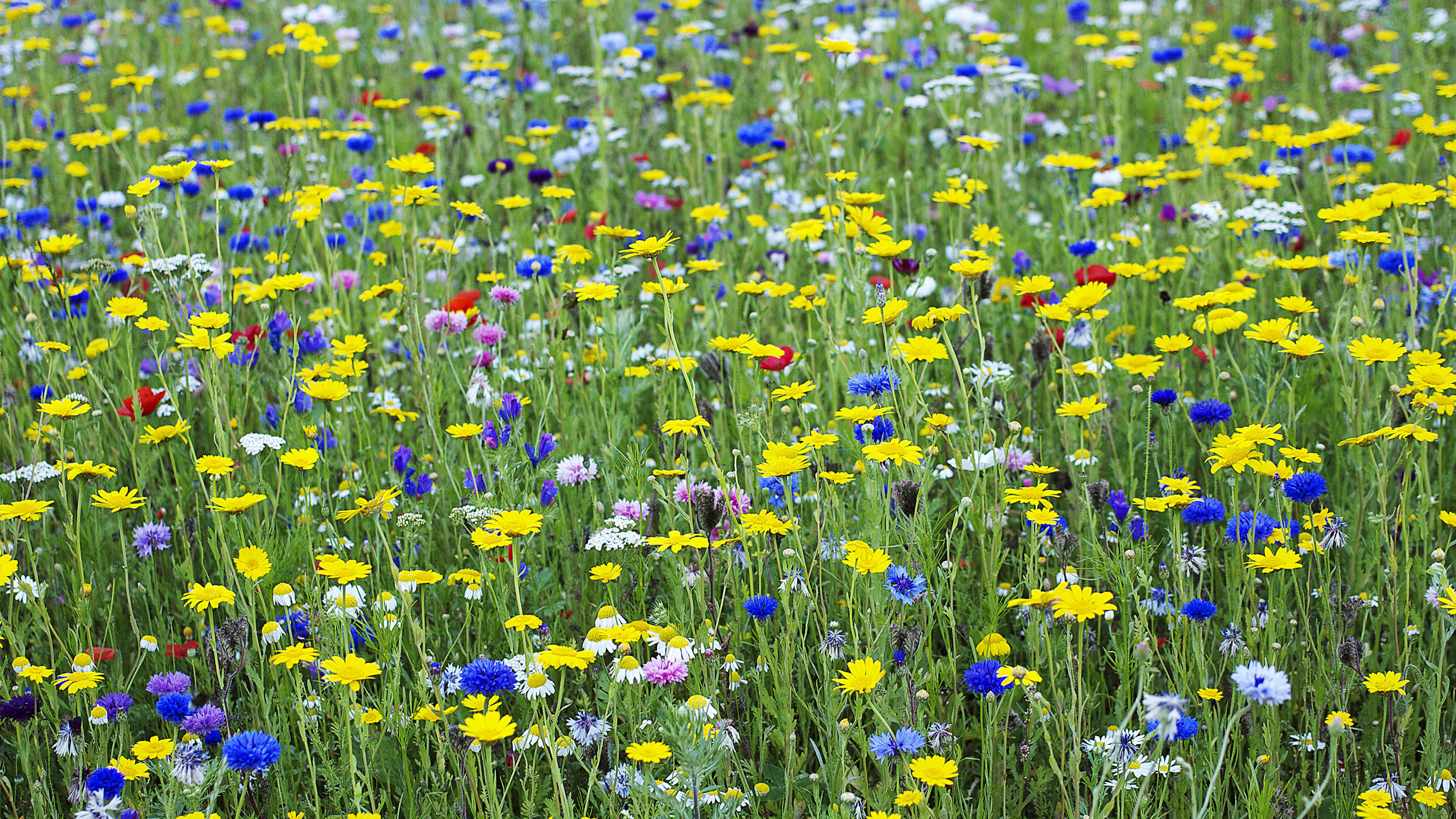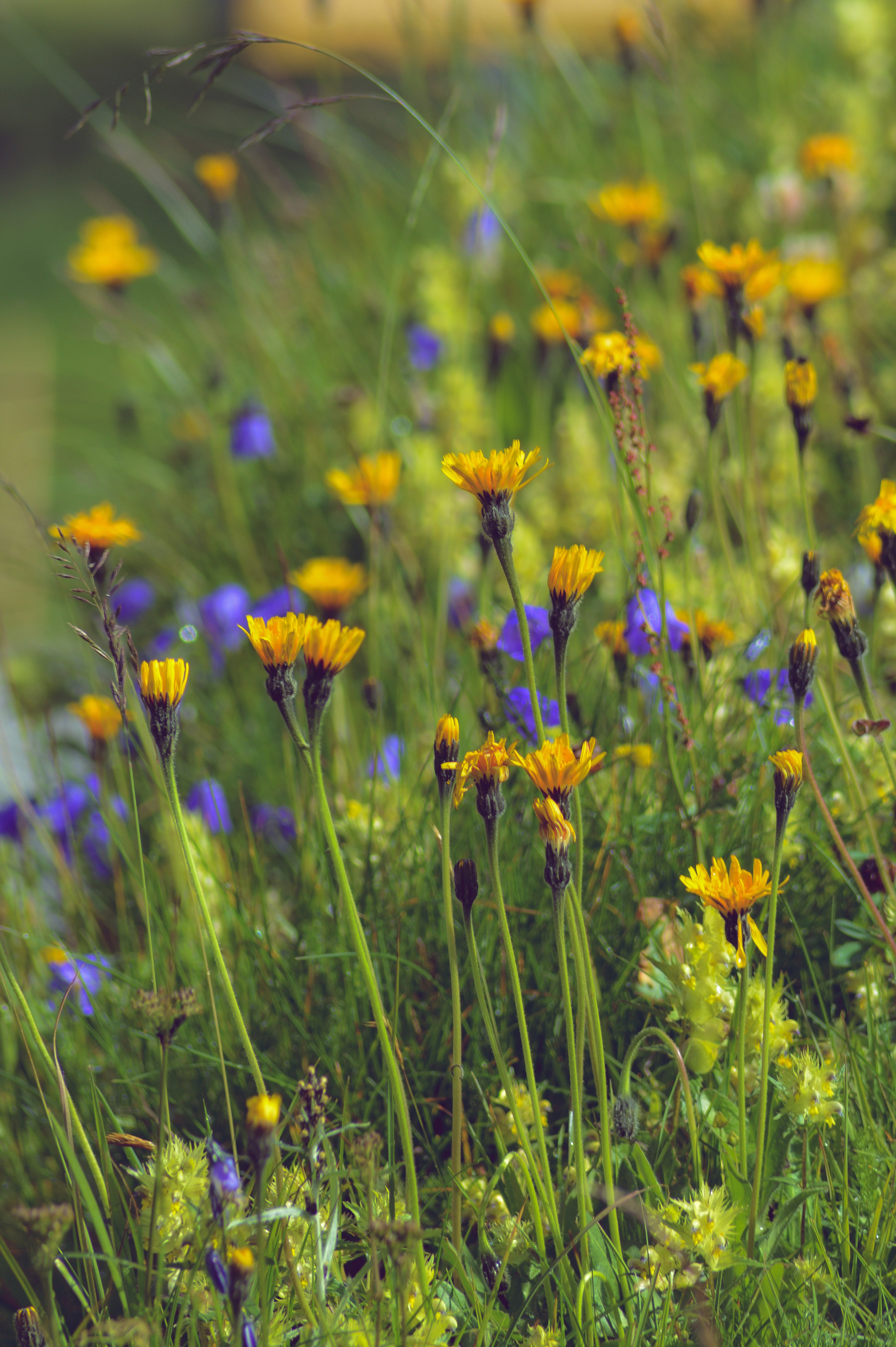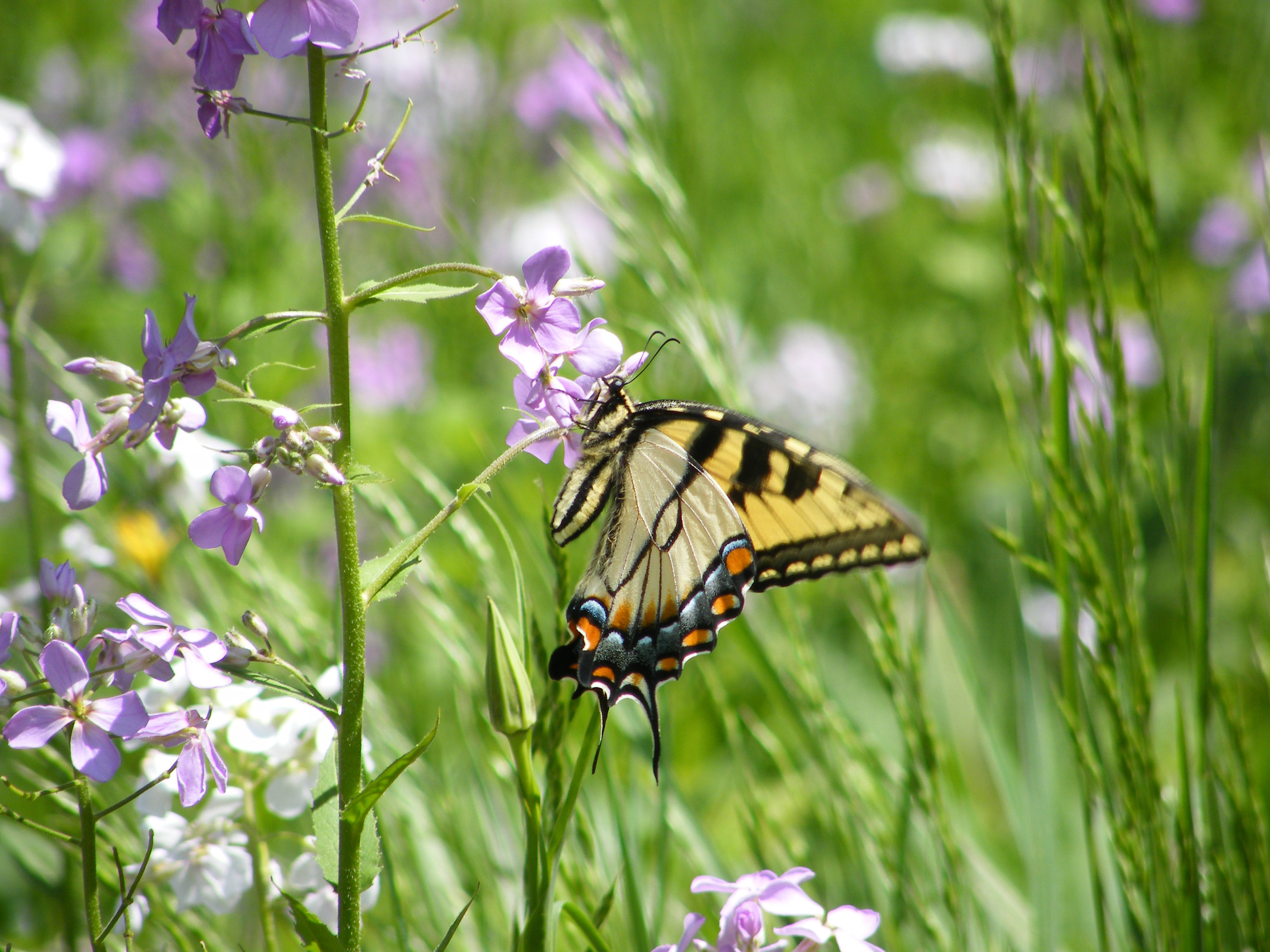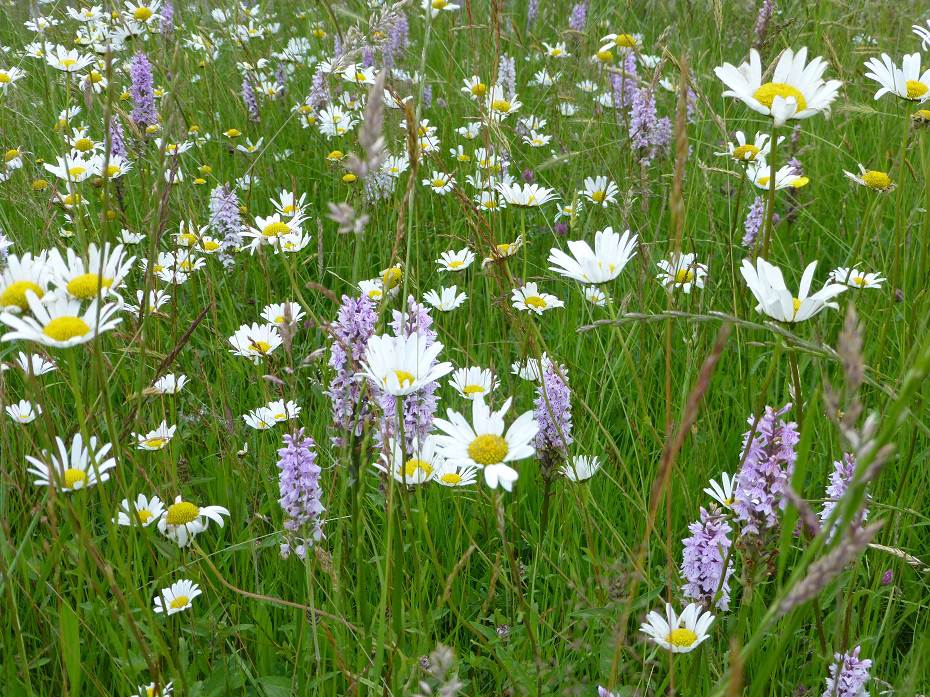How to plant a wildflower meadow in your garden: try this alternative to lawns and borders
Learn how to plant a wildflower meadow with our easy guide. From what flowers to choose and when to sow the seeds, we've got all the advice you need to get started


Once you have learned how to plant a wildflower meadow in your garden, you can easily transform scruffy and under-used areas of your space. Adding a mixture of wild flowers to your garden will create a stunning sight that you'll get to enjoy for years to come.
Native plants such as delicate ox-eye daisies, red clover, cowslips, field scabious, golden meadow buttercups and wild carrot will colonise the scrappiest pieces of ground in an irresistible combination of fluffy grasses, skinny stems and frothy foliage dotted with spangles of jewel-bright flowers.
The bonus is that as well as looking good throughout the spring and summer months, the plants will attract bees, clouds of butterflies and lots of beneficial bugs.
Read on for our advice on how to create a wildflower meadow, then head over to our guide to garden borders for more inspiring ideas and expert tips on adding interest to your space.
What is a wildflower meadow?

A wildflower meadow is defined as an area of permanent grass where wildflowers native to the area grow.
Wildflower meadows are perennial (meaning they flower every year) and should not be confused with annual flower meadows. These tend to be more colourful, and they include non-native plants such as Californian poppies and coreopsis mingling together in a beautiful profusion of colours as a one-off display which needs to be replanted every year.
The two types of meadow need completely different conditions, so they must be treated separately. But the good news is that if you want to learn how to plant to wildflower meadow, either option can be created in any size garden, whether you want a whole lawn meadow or just a small strip of relaxed planting. All you need is a little ground prep and some easy steps to ensure success.
When is the best time to plant a wildflower meadow?
The best time to create a wildflower meadow from scratch is in early autumn. The plants will grow best on poor soil.
If, however, you have particularly heavy soil that gets easily waterlogged , it might be better to wait until early spring to sow your seeds. This is to prevent the seeds from rotting in the soil during really wet weather in winter.
How do you create a wildflower meadow?

1. The first priority when planning how to plant a wildflower meadow is to prepare the soil for planting. If you are converting an existing garden border into a meadow, remove about 10-15cm of the top layer of earth. This gets rid of the most nutritious soil.
2. Dig the area over thoroughly, removing any existing weeds and roots. Work it until the soil resembles fine bread crumbs.
3. Lay some plastic sheeting down for a couple of weeks to kill the weeds which will continue to sprout. Watch out particularly for thistles and dock, which can quickly take over.
4. When the area is clear, it is ready to plant with wildflower seeds. Buying a ready-made mix from a specialist website is recommended, as you will get a good balance of grasses and flowers which complement one another.
5. If starting from scratch is simply too daunting – or too much like hard work - it is possible to convert an existing strip of lawn into a wildflower meadow. Mow the grass to a height of about 5cm. Remove any clippings.
Buy some ready grown wildflower plug plants (try Wildflower) and push them directly into the grass, making a hole first with a dibber or a sharp pointed trowel. Space the plugs at irregular intervals for a natural look. You should aim for about five plug plants per square metre.
WHICH PLANTS ARE BEST FOR A WILDFLOWER MEADOW?

Try birds-foot trefoil, common sorrel, field scabious, ox-eye daisy, red campion, red clover, yarrow and wild carrot.
Always include a plant called Yellow Rattle in the mix. This annual flower helps to control the grasses and stops them from overwhelming the flowers. Most of the other plants are perennials, so they will die back in winter, and regrow every year.
How to sow seeds and plant a wildflower meadow

Once the ground is prepared, it is time to get ready for sowing, Mixed seeds in carefully balanced quantities are available to buy from specialist websites, or you can buy them separately and mix your own. For a UK wildflower meadow, using seeds of British origin which will come back year after year, try Pure Seeds or Wild Seed.
A good tip for sowing the seed is to mix it with five parts of sand and one part of seed. Aim for about 3 grams of seed per square metre. Always use sharp sand, available from garden centres, rather than builders’ sand, which tends to be too damp.
Mixing the seeds and the sand together will ensure a more even spread and growth. Wildflower seeds are often tiny, so using this method means that you can see where you have already sown, avoiding the risk of overcrowding the seedlings.
Once the seeds have been sprinkled on the ground, do not cover them. Just press them down lightly with the back of a spade or your feet. If the weather is dry, water lightly using a watering can with a rose, taking care not to wash the seeds away.
Maintaining a wildflower meadow

Once you've discovered how to plant a wildflower meadow, it's relatively low maintenance to look after, but there are some tips to take on board to gain the best display in your garden.
When the meadow has grown, it should be mown three or four times in the first year, back down to about 5cm tall. Do not remove the cuttings for a few days, as this allows the seeds to fall back into the soil, where they will germinate and add to your display.
After the first year, leave the meadow to its own devices in the winter, and then mow or strim once in the spring, and once in autumn. It will fill out and develop, attracting all sorts of wildlife to your patch.
Once it is established, mow a path through the middle of your meadow to lead the eye into the distance. It’s an easy and effective way to create a charming garden feature.
What are the benefits of a wildflower meadow?

A wildflower meadow doesn't just look pretty, it encourages a variety of beneficial insects which will help to pollinate plants.
By having lots of bee friendly plants, creatures such as bees, moths, butterflies, saw flies and crane flies may visit, as well as birds and endangered species of wildlife, such as hedgehogs. These creatures will help to naturally control aphids and garden pests including slugs and snails.
Find more ways to encourage creatures into your garden with our wildlife garden ideas.
HOW TO CREATE A MULTI-COLOURED ANNUAL MEADOW
If you want to make a stunning rainbow of colour in your garden, opt for an annual meadow, rather than a wildflower meadow. It is less work, as these plants will thrive in richer soil, so they can be sown directly into beds and borders without the need to remove the topsoil. There’s no mowing involved with an annual meadow either. Plus, you will get a more colourful feature because both native and non-native flowers are used in annual mixes.
Choose an open, sunny area and dig over the ground, removing any weeds. An annual meadow is sown in mid to late spring. When the ground is ready, use a mix of seeds, either a pre-prepared formula (try Pictorial Meadows) or, for smaller spaces, you could use a ready mixed seed ball instead (try Seed Ball).
To create your own mix, try a combination of these seeds: cornflower, coreopsis, ammi majus, echinacea purpurea, sweet rocket, American basket flower, corncockle, Californian poppy and black-eyed susan. Opt for a random mix of colours, or theme them, using only cool tones, or perhaps a riot of hot, bold shades.
An annual meadow will grow within about three months, but it will need to be re-sown every year with fresh seeds.
Using wildflower turf to create a meadow

Don't have the time to create a wildflower meadow from scratch? Laying wildflower turf, a pre-sown roll of grass which can be laid directly on to bare soil, is a quick way to achieve a meadow without the effort of preparation or seed sowing.
Some companies specialise in this service and offer national delivery. In the UK, try Wildflower Lawns and Meadows or Wildflower Turf.
Creating a wildflower meadow in a container
If you have a balcony garden or a courtyard garden, you can plant a mini meadow in a pot.
Choose a container with drainage holes. Add a layer of grit in the base. Fill with peat-free compost or some garden soil. Sow mixed seeds on the surface and press down gently with the back of a trowel.
Water gently, so the seeds are not washed away, and place in a sunny site. Spring (late March to the end of May) is a good time to plant the container.

An experienced freelance journalist, editor and columnist writing for national magazines and websites, Fiona now specialises in gardens. She enjoys finding and writing about all kinds, from the tiniest town plots to impressively designed ones in grand country houses.
